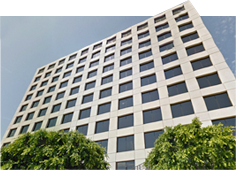Timing is Everything: Lawful Permanent Residents Face October 1st F-2A Deadline
The Department of State recently released October’s Visa Bulletin, bringing with it the news that the Family-Based F-2A classification (Petitions for Spouses and Children of Permanent Residents) will retrogress as of October 1, 2013. If available visa numbers are used before then, the classification may backlog sooner. Individuals that are Lawful Permanent Residents of the U.S. and are interested in helping their spouse and children obtain immigration benefits should be filing their family based petitions with all due speed, as only several weeks remain before retrogression sets in.
The difference in filing before and after the retrogression can be significant: filing before retrogression means that concurrently with the relative petition, the beneficiary spouse or child can apply for their Green Card, Work Authorization Card and Travel Permit; filing after retrogression means that only the relative petition can be filed. If only the relative petition is filed, this does not grant any immediate benefit to the beneficiary.
The other significant benefit of filing on time is that after the concurrently filed applications are received, the beneficiary is considered to be in an “authorized period of stay”, which means that the government will generally not try to deport that individual. Whether it takes 12 months or 3 years for the underlying relative petition to be approved and the beneficiary’s priority date to become current again, the beneficiary is generally considered to be in the U.S. with authorization and can renew their work permit. Clearly, the difference in filing before and after retrogression is significant and timing is everything.
Before submitting a petition or adjustment of status application to USCIS, it is important to understand whether the beneficiary is eligible for adjustment of status in the first place. Individuals that overstayed their visa, entered the U.S. or worked without authorization, have committed crimes or were previously deported, may not be eligible to adjust status. In certain instances, individuals eligible under Section 245(i) or qualifying for a waiver of inadmissibility would be able to get around these transgressions.
Once the concurrently filed applications are pending, several scenarios may occur while the beneficiary is awaiting his or her priority date to become current again. For example, the petitioner may take the oath of allegiance and become a Naturalized U.S. citizen. If this occurs, the pending relative petition can be upgraded. The spouse or child under 21 of a citizen is classified as an immediate relatives and not subject to numerical limitations, allowing the adjustment of status to be processed much sooner. On the day the petitioner Naturalizes, a child beneficiary’s age is “locked in” for purposes of the Child Status Protection Act (CSPA), where “aging out” is a concern. In a different scenario, if the child of an F-2A beneficiary spouse turns 21, and is no longer able to be a derivative on the application, a separate petition in the F-2B category can be filed for the child and the original priority date can be retained.
Visa numbers for F-2As are typically backlogged by several years and this is the first time in decades that F-2A visa numbers have become current. This opportunity should not be squandered. Petitions and applications not properly prepared will result in USCIS rejections or processing delays, subjecting qualifying relatives to visa number retrogression. Great care should therefore be taken to ensure petitions and visa applications are filed quickly—but also properly. Lawful residents and their family members should seek the advice and assistance of competent legal counsel with due speed.






